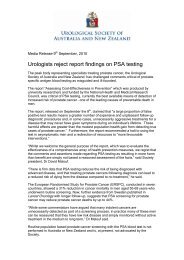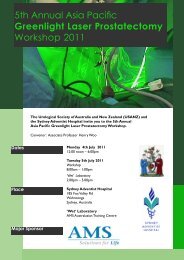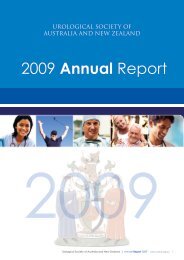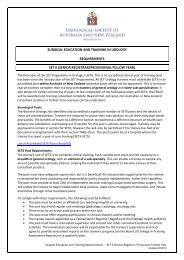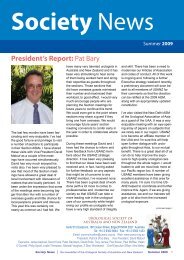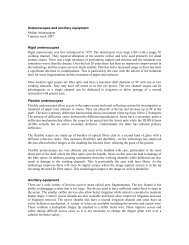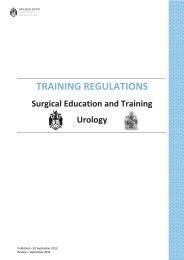CIRCUMCISION OF INFANT MALES
CIRCUMCISION OF INFANT MALES
CIRCUMCISION OF INFANT MALES
You also want an ePaper? Increase the reach of your titles
YUMPU automatically turns print PDFs into web optimized ePapers that Google loves.
procedure should be trained in children’s surgery, and the operation must be undertaken in<br />
an operating theatre or similar premises suitable for surgical procedures. Parents need to<br />
be made fully aware of the implications of this non-reversible operation, and the child<br />
should receive adequate pain relief during and after the procedure.<br />
British Medical Association (BMA)[118]<br />
The law and ethics of male circumcision – guidance for doctors. The guidance outlines<br />
good practice and safeguards which the BMA believes doctors should follow. It cites the<br />
British Association of Paediatric Surgeons’ conclusion that there is rarely a clinical<br />
indication for circumcision, and doctors should be aware of this and reassure parents<br />
accordingly. Non-therapeutic circumcision is discussed in “ritualistic” terms, including<br />
circumstances where performed for religious reasons, to incorporate a child into a<br />
community, or where some want their sons to be like their fathers. The association has no<br />
policy on these issues, and a spectrum of views exists as to whether it is beneficial,<br />
neutral, harmful or even superfluous. The Association accepts the difficulty in formulating<br />
a policy where there is a lack of unambiguously clear and consistent data, and medical<br />
harms or benefits have not been unequivocally proven. Legal and ethical considerations<br />
are discussed, and male circumcision is generally assumed to be lawful provided that it is<br />
performed competently; it is believed to be in the child’s best interests; and there is valid<br />
consent. The medical evidence about the health impact of male infant circumcision<br />
remains equivocal. Circumcision for medical purposes, where medical research has<br />
shown other techniques to be at least as effective and less invasive would be unethical<br />
and inappropriate.<br />
American Urological Association[123]<br />
The American Urological Association, Inc.® (AUA) believes that neonatal circumcision has<br />
potential medical benefits and advantages as well as disadvantages and risks. Neonatal<br />
circumcision is generally a safe procedure when performed by an experienced operator.<br />
There are immediate risks to circumcision such as bleeding, infection and penile injury, as<br />
well as complications recognised later that may include buried penis, meatal stenosis, skin<br />
bridges, chordee and poor cosmetic appearance. Some of these complications may<br />
require surgical correction. Nevertheless, when performed on healthy newborn infants as<br />
an elective procedure, the incidence of serious complications is extremely low. The minor<br />
complications are reported to be three percent.<br />
Properly performed neonatal circumcision prevents phimosis, paraphimosis and<br />
balanoposthitis, and is associated with a decreased incidence of cancer of the penis<br />
among U.S. males. In addition, there is a connection between the foreskin and urinary<br />
tract infections in the neonate. For the first three to six months of life, the incidence of<br />
urinary tract infections is at least ten times higher in uncircumcised than circumcised boys.<br />
Evidence associating neonatal circumcision with reduced incidence of sexually transmitted<br />
diseases is conflicting. Circumcision may be required in a small number of uncircumcised<br />
boys when phimosis, paraphimosis or recurrent balanoposthitis occur and may be<br />
requested for ethnic and cultural reasons after the newborn period. Circumcision in these<br />
children usually requires general anaesthesia.<br />
When circumcision is being discussed with parents and informed consent obtained,<br />
medical benefits and risks, and ethnic, cultural, religious and individual preferences should<br />
be considered. The risks and disadvantages of circumcision are encountered early<br />
whereas the advantages and benefits are prospective.<br />
19



